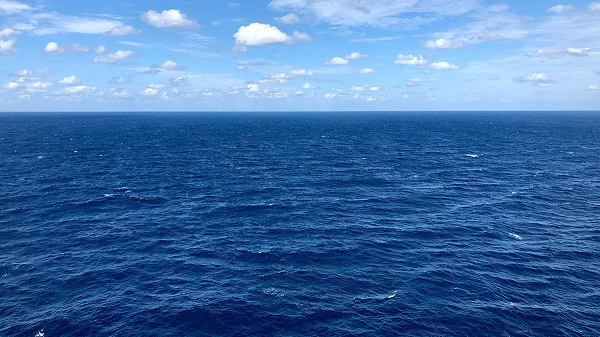The Atlantic Ocean circulation will collapse around the middle of the century, scientists predict
Key strategies for degrowth in the fight against climate change / Researchers discover a cause of rapid ice melting in Greenland
This is the conclusion based on fresh estimates from the University of Copenhagen, which contradict the IPCC's most recent assessment.
Contrary to popular belief, a colder future may be in store for Europe as a result of climate change. Researchers from the University of Copenhagen's Niels Bohr Institute and Department of Mathematical Sciences predict that if we continue to emit the same levels of greenhouse gases as we do today, the system of ocean currents that currently distributes cold and heat between the North Atlantic region and the tropics will cease to exist.

The Atlantic Ocean circulation will collapse around the middle of the century, scientists predict (Illustrative image).
The researchers calculated that the ocean current, known as the Thermohaline Circulation or the Atlantic Meridional Overturning Circulation (AMOC), will collapse with 95 percent certainty between 2025 and 2095 using advanced statistical tools and ocean temperature data from the last 150 years. This will most likely happen in 34 years, in 2057, and might cause serious problems, notably in the tropics and in the North Atlantic area.
"Shutting down the AMOC could have serious consequences for the Earth's climate, such as altering how heat and precipitation are distributed globally." While cooling in Europe may appear less severe as the world warms and heat waves become more common, "this shutdown will contribute to an increased warming of the tropics, where rising temperatures have already given rise to challenging living conditions," says Niels Bohr Institute Professor Peter Ditlevsen.
"Our findings highlight the critical importance of reducing global greenhouse gas emissions as soon as possible," adds the researcher.
The estimates, which were recently published in the scientific journal Nature Communications, contradict the message of the most recent IPCC report, which, based on climate model simulations, believes that a sudden shift in thermohaline circulation is quite improbable within this century.
There are early warning signs
The prediction is based on studies of early warning signs shown by ocean currents when they become unstable. These Thermohaline Circulation Early Warning Signals had previously been described, but it is only recently that new statistical approaches have made it feasible to forecast when a collapse would occur.
From 1870 to the present, the researchers examined sea surface temperatures in a particular region of the North Atlantic. These sea surface temperatures represent "fingerprints" of the AMOC's intensity, which has only been directly monitored for the last 15 years.
"We've made calculations that provide a more robust estimate of when a collapse of the Thermohaline Circulation is most likely to occur, which we couldn't do before," explains Professor Susanne Ditlevsen of UCPH's Department of Mathematical Sciences.
The thermohaline circulation has been operating in its current state since the previous ice age, when it was actually collapsed. In the context of ice age climate, abrupt climatic shifts between the current state of the AMOC and the collapsed state have been seen 25 times. These are the famous Dansgaard-Oeschger occurrences, which were discovered in Greenlandic ice cores. Climate change was dramatic during the time, with 10-15 degree swings within a decade, but today's climate change is 1.5 degree warming over a century.
The Atlantic Meridional Overturning Circulation (AMOC) is part of a worldwide current system. It provides for the vast majority of heat redistribution from the tropics to the Atlantic's northernmost areas, including Western Europe.
Circulation guarantees that surface water is turned into deep, southbound ocean currents in the northernmost latitudes. The transition makes room for more surface water to travel northward from tropical areas. As a result, thermohaline circulation is crucial for preserving the North Atlantic region's relatively moderate climate. TiPES, a cooperative European research cooperation focusing on climate system tipping points, is funding the study. The TiPES project is an EU Horizon 2020 multidisciplinary climate research initiative focusing on climate system tipping points. |
Journal Reference: Peter Ditlevsen, Susanne Ditlevsen. Warning of a forthcoming collapse of the Atlantic meridional overturning circulation. Nature Communications, 2023; 14 (1) DOI: 10.1038/s41467-023-39810-w
End of content
Không có tin nào tiếp theo
